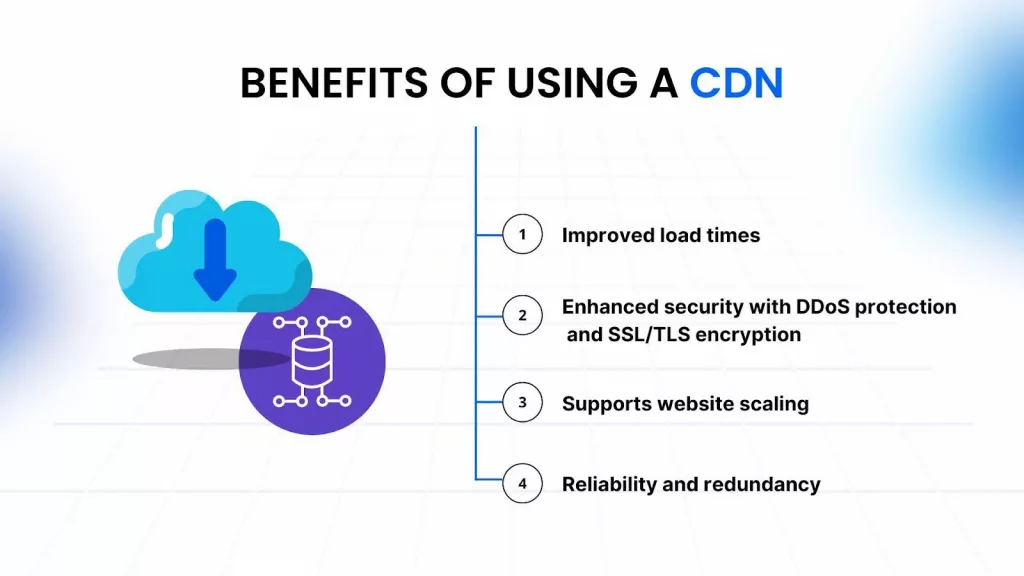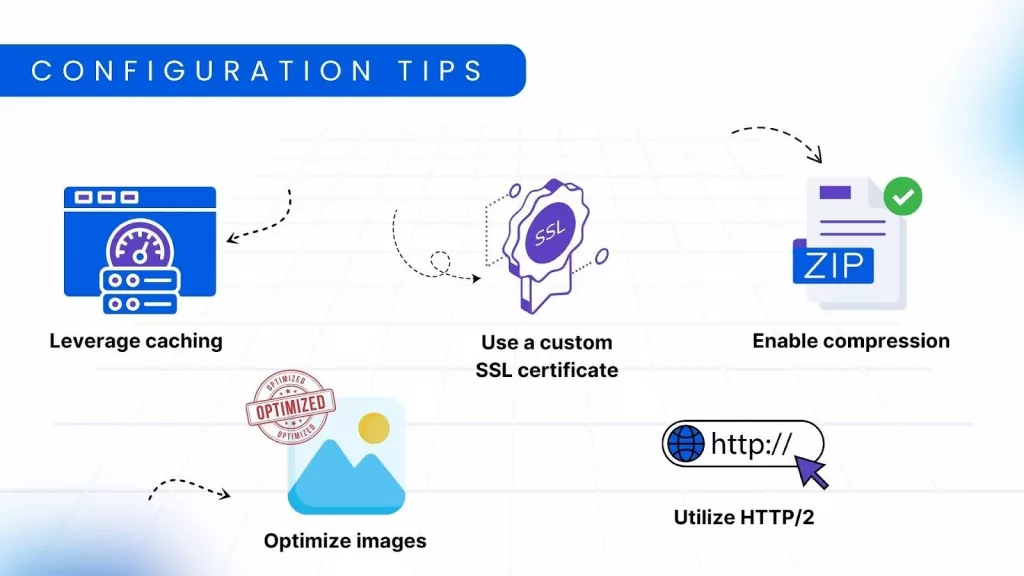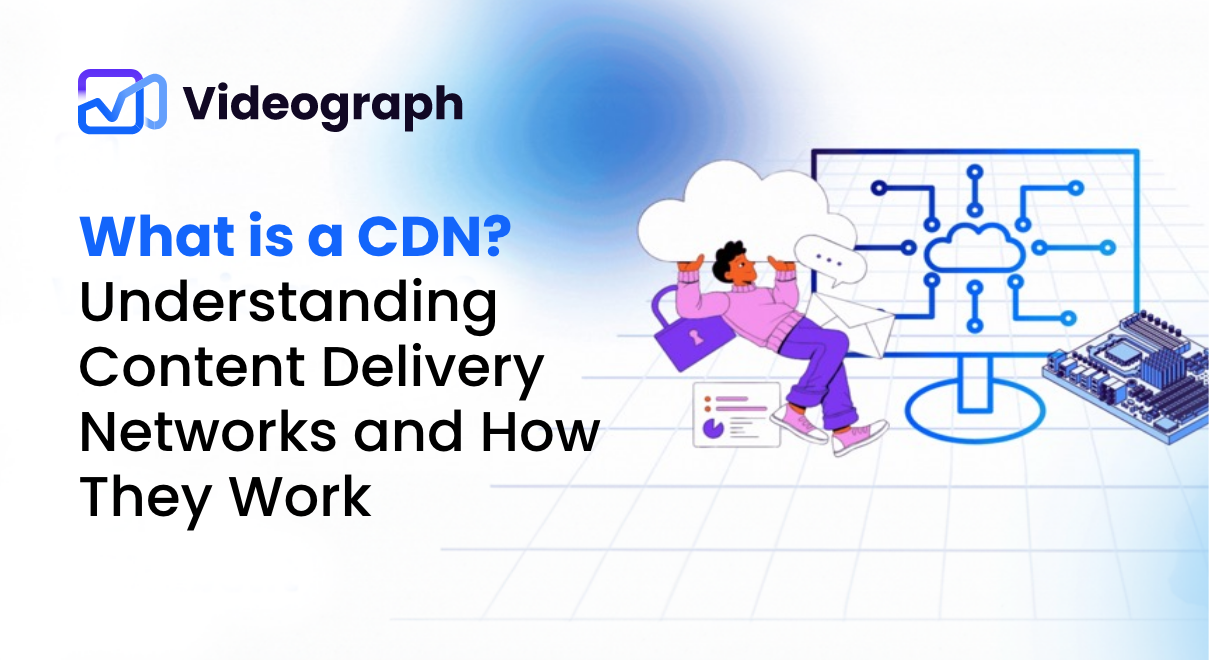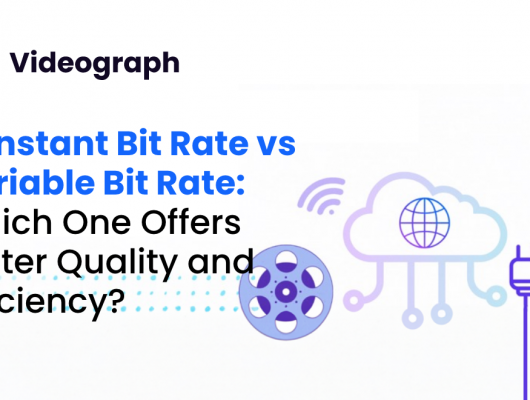Do you know that more than 47% of consumers anticipate a website to be loaded within 2 seconds? And 40% of people leave if a website takes more than three seconds to load. This is where Content Delivery Networks, or CDNs, come into play. They are a network of servers distributed across various locations to work together and deliver content quickly and efficiently.
Websites have become more complex, and user expectations have risen; the need for fast and reliable content delivery has never been greater. CDNs can significantly improve your website’s performance, whether you run a personal blog, an online store, or a video streaming service.
Let’s get down to what is CDN, how it works, its benefits, and tips on choosing the right CDN.
What is CDN?
A Content Delivery Network, or CDN, distributes content efficiently across the internet. Imagine it as a network of servers strategically placed around the world. Instead of relying on a single server to deliver all your website’s content, a CDN uses multiple servers to share the load.
It helps deliver web content, including images, videos, and other files, faster to users based on their geographic location. The CDN directs a user’s request to the closest server. This means that the content travels a shorter distance, significantly speeding up the loading time.
Key Components
- Edge Servers: These are the servers located closest to the users. They store copies of your website’s content and serve it to users quickly.
- Origin Servers: This is where your original content is stored. The CDN pulls data from the origin server and distributes it to edge servers.
- Points of Presence (PoPs): These are strategically located data centers where edge servers reside. A well-placed PoP ensures that content can be delivered efficiently, no matter where the user is.
Therefore, a CDN improves load times, enhances reliability, and reduces the risk of server overloads, making it essential for improving user experience.
How Do CDNs Work?
CDNs distribute content across multiple servers, ensuring that users connect to the nearest server, minimizing data travel distance and speeding up loading times. For example, if a user in New York visits a website hosted in California, the CDN will deliver the content from a server located closer to New York, resulting in faster access.
Caching Mechanism
One of the key features of a CDN is its caching mechanism. It stores your website content’s copies on edge servers and delivers that cached copy instead of fetching it from the origin server each time, minimizing the load on origin servers and speeding up delivery.
The benefits of caching include:
- Reduced Latency: By serving content from a nearby edge server, users experience faster load times.
- Less Bandwidth Usage: Caching reduces the amount of data sent back and forth between the origin server and users, saving on bandwidth costs.
- Improved Reliability: If the origin server goes down or faces issues, cached content can still be served to users, ensuring your website’s accessibility.
Content Delivery Process
Here is a step-by-step overview of content delivery via a CDN:
User Request: A user enters a website address or clicks a link to access content.
DNS Resolution: The request is sent to a Domain Name System (DNS) server, which translates the website address into an IP address.
CDN Routing: The CDN determines the closest edge server to the user and directs the request to that server.
Content Delivery: The content cached on the edge server is delivered directly to the user. If not, the edge server fetches it from the origin server, caches a copy, and then delivers it to the user.
User Experience: The user receives the content quickly, leading to a better experience on your website.
Benefits of Using a CDN

Improved Load Times: A significant benefit of a CDN is its ability to reduce latency and improve page load speeds. It delivers content from the nearest edge server, minimizing data’s travel distance, which leads to faster loading times.
Enhanced Security: Many CDNs provide DDoS (Distributed Denial of Service) protection, which helps safeguard your site from overwhelming traffic attacks that can disrupt service. They also support SSL/TLS encryption, ensuring that data transmitted between users and servers is protected from prying eyes.
Scalability: A CDN can easily handle the increased load in case of sudden traffic spikes. A CDN allows your site to scale efficiently by distributing traffic across multiple servers.
Reliability and Redundancy: With multiple edge servers, your content remains accessible even if one or more servers fail, ensuring CDN reliability. This redundancy ascertains that users can still access your site without interruptions. If a server goes down, the CDN automatically reroutes requests to the next closest server, maintaining a consistent experience for your users.
Types of Content Delivered by CDNs
CDNs can handle various content types, and understanding what content CDNs deliver can help you make the most of this technology.
Static Content: Content such as images, CSS (Cascading Style Sheets), and JavaScript files don’t change frequently and are essential for the look and feel of a website. CDNs excel at delivering static content by caching these files on edge servers, resulting in faster load times and improving the user experience.
Dynamic Content: Dynamic content changes based on user interactions or other factors. This includes personalized content like user profiles, comments, and real-time updates. CDNs handle dynamic content differently than static files, caching only certain parts or using techniques to reduce the load on the origin server. For example, CDNs can optimize real-time data delivery, such as scores during a live sports event, ensuring users receive the latest information without delays.
Streaming Media: CDNs are essential for delivering streaming media like video and audio. They help support smooth playback by distributing media files across multiple servers, reducing buffering times, and enhancing the overall viewing or listening experience.
Popular CDN Providers
Some leading CDN providers stand out:
Akamai: It offers extensive global coverage, strong security features, and high performance, catering to large enterprises.
Cloudflare: Its user-friendly setup and multiple services beyond CDN (DDoS protection and website optimization) stand out. Their free plan is particularly appealing for smaller sites.
AWS CloudFront: Its customization, pay-as-you-go pricing, and integration with other AWS services make it a solid choice if you already use the AWS ecosystem.
CDN Provider Comparison
Features:
- Akamai: Security and advanced analytics.
- Cloudflare: Broad range of features like a free plan and built-in security measures.
- AWS CloudFront: Flexible configurations and deep integration with AWS services.
Pricing:
- Akamai: Targets larger companies with customized pricing (can be higher than others).
- Cloudflare: Competitive free plan and affordable paid plans for those needing extra features.
- AWS CloudFront: Its pay-as-you-go model can be cost-effective for variable traffic levels.
Performance:
- Akamai: High performance and low latency due to its vast network of servers.
- Cloudflare: Excellent speed and strong global presence.
- AWS CloudFront: Great performance, especially for users already leveraging AWS services.
Choose the Right CDN for Your Needs
Choosing a CDN needs a few considerations:
Performance: You need to consider a CDN with low latency, fast load times, extensive network coverage, and numerous edge servers for efficient global content delivery.
Geographic Coverage: When choosing a CDN, consider your users’ location. Some CDNs are better for global audiences, while others focus on specific regions.
Security Features: Consider the CDN’s security features, such as DDoS protection and SSL/TLS encryption, to safeguard your content and protect user data.
Support and Documentation: A CDN with good customer support can save you time and frustration. Check for responsive support teams to assist you when needed.
Cost: CDNs have different pricing models. Choose one that fits your financial needs while delivering the features you require.
Use Cases
- E-commerce Sites: CDNs can speed up product images and checkout processes, improving the shopping experience and boosting sales.
- Media Platforms: Streaming services rely heavily on CDNs to deliver high-quality content without buffering, improving user satisfaction.
- Blogs and News Sites: They benefit from faster load times, ensuring users access articles and images quickly and remain attentive.
Common CDN Misconceptions and Myths
Despite their growing popularity, many CDN myths and misconceptions exist:
Myth: CDNs Are Only for Large Websites
Fact: CDNs also benefit small and medium-sized websites, enhancing performance and user experience. In fact, CDNs can help smaller sites compete with larger ones by improving load times and security.
Myth: CDNs Are Complicated to Set Up
Fact: Many CDN providers offer user-friendly interfaces and comprehensive documentation to help with setup. Integration is straightforward, even for those with limited experience.
Myth: CDNs Are Expensive
Fact: While costs can vary, there are CDNs available for all budgets with flexible pricing models. Some CDNs have pay-as-you-go options, making them accessible for smaller sites.
Myth: Using a CDN Guarantees 100% Uptime
Fact: CDNs improve reliability but cannot guarantee 100% uptime. They reduce the likelihood of downtime by providing redundancy and routing around failures.
Myth: CDNs Only Serve Static Content
Fact: CDNs are great for delivering static and dynamic content, as well as streaming media, thanks to advanced caching strategies that optimize content delivery for a smooth user experience.
How to Set Up a CDN
Setting up a CDN is easy if you follow these basic integration steps:
Step-by-Step Guide
- Choose a CDN provider based on your needs.
- Sign up and create an account.
- Add your website and specify the type of content you want to serve.
- Configure DNS settings: Update your Domain Name System (DNS) settings, which involves changing your DNS records to point to the CDN’s servers. Most providers offer step-by-step guidance for this process.
- Customize caching rules as per your website’s content. Decide which files should be cached and for how long to optimize performance and ensure that users receive updated content when needed.
- Enable security features like DDoS protection, SSL/TLS encryption, and web application firewalls to secure your site and user data.
- Test the setup to check loading speeds and ensure that content is being delivered from the CDN. Monitor for any issues.
- Monitor performance with analytics tools to track load times, user engagement, and security alerts and make any necessary adjustments.
Configuration Tips

- Start with Defaults: Most CDN providers come with sensible default settings. You can start with these and make adjustments as you learn more about your specific needs.
- Regular Updates: Keep your CDN configuration up to date, especially if you change your website’s structure or add new content types.
- Leverage Caching: Set appropriate cache headers to serve frequently accessed content quickly.
- Enable Compression: Use compression to reduce file sizes, speeding up load times.
- Use a Custom SSL Certificate: Implement a custom SSL certificate to secure connections and boost user trust.
- Optimize Images: Compress and resize images before uploading to reduce loading times without sacrificing quality.
- Utilize HTTP/2: Enable HTTP/2 for faster loading times and improved performance, especially for websites with lots of resources.
Case Studies and Examples
Let’s examine some CDN case studies to learn from real-world examples.
Netflix: Netflix relies on CDNs to deliver its vast video library globally, ensuring minimal buffering and fast loading times for millions of simultaneous users.
Amazon: By caching product images, CSS files, and other static content, Amazon significantly reduces load times, abandoned carts, and lost sales. The CDN also helps Amazon scale during high-traffic events like Black Friday sales.
Results
Here are CDN results for the above companies that led to performance improvements:
- Netflix has reported reduced buffering times, leading to higher user satisfaction and retention.
- Amazon has seen increased conversion rates, as faster load times result in fewer abandoned shopping carts.
Conclusion
Looking to improve your website’s performance and user experience? CDN is your answer!
This blog piece not only tells you what is CDN but also explores its benefits and CDN implementation steps. From faster load times to enhanced security features, CDNs will help your business provide a better user experience.
Evaluate your needs and start consulting with CDN providers now!
FAQs
What is the main purpose of a CDN?
CDN’s purpose is to deliver content to users more efficiently. By using multiple servers worldwide, a CDN minimizes loading time and improves the performance of websites, ensuring that users have a smooth experience.
How does a CDN improve website performance?
A CDN enhances website performance by caching content on servers closer to users. This reduces the distance data travels, resulting in faster loading times. Additionally, CDNs can distribute traffic more evenly, preventing any single server from becoming overwhelmed during peak times.
Are there any drawbacks to using a CDN?
- CDN drawbacks include:
- The costs
- Some CDNs may not cover specific regions well
- There could be complications with certain types of content
Can I use a CDN for my small website?
Absolutely! CDNs benefit websites of all sizes. A CDN can help small websites compete with larger ones by improving load times and security. Choose flexible pricing plans that fit your budget.







